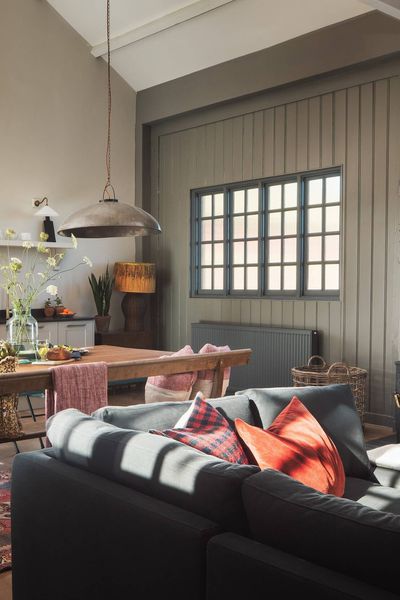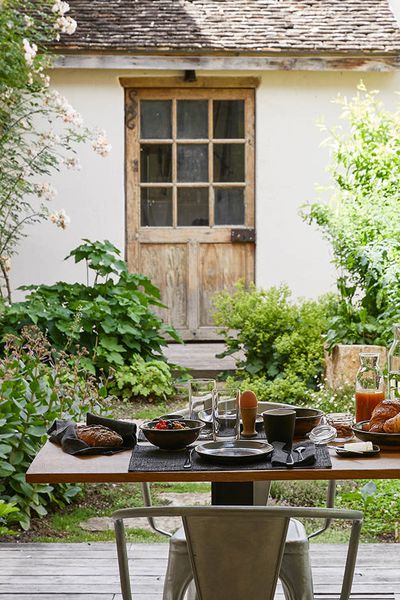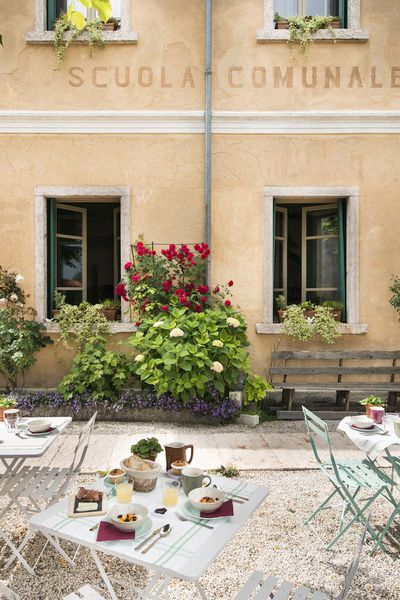
Carolyn Boyd has travelled in and written about France for almost as long as we have. In her new book, she explores the one thing she loves about the country above all others – the food. Amuse Bouche is a gastronomic tour of France’s regions which gives you a flavour of the cuisine and the complex culture that surrounds it. In these extracts, Carolyn is in northern France, sampling the cider apples of Normandy, breaking bread in Paris and wondering at the “onion Johnnies” who, despite only existing in the north, gave the Brits our classic picture of a stripe-shirted Frenchman.
Roscoff Pink Onions, Brittany
Picture a Frenchman. Does a beret, a striped jersey, a bicycle and a string of onions spring to mind? On the occasions I’ve shared the stereotypical image of a Frenchman with Parisians or those from beyond Brittany, they’ve been baffled as to why the British see the French this way. They’ve never heard of Roscoff, let alone their onions. And don’t the Brits realise France is the home of fine wines, haute cuisine and Michelin stars? The story behind this widely held national stereotype begins in the small harbour town of Roscoff.
In the early nineteenth century, poverty drove hundreds and then thousands of men across the channel to sell, door-to-door, the gentle pink onions that flourished in northern Finistère. For more than 150 years, the ‘Onion Johnnies’, so-called because so many were called ‘Jean’ (or Jean-Christophe, Jean-Claude, etc.), were the only contact the British had with the French, or in fact any foreigner. That such a tiny town could spawn an industry that stretched as far as the Orkneys is a wonder.
Explore our special places to stay in Brittany >
Apples, Pays D’auge, Normandy
There’s no mistaking Normandy’s signature product: in spring, the orchards are a blaze of white blossom; in summer the trees bear their fruit; and in autumn the leaves turn a riot of colour. Whatever the season and wherever you are in the Calvados department – and parts of Orne and Eure too – apples are in abundance. With so many to deal with, the region’s cooks wholeheartedly rise to the challenge, and I’m always astounded by the incredible array of dishes and products that incorporate apples in some way. Breakfasts feature apple tarts, galettes are topped with cheese and poached apples; mussels are cooked in cider; and desserts are flambéed with Calvados.
When you’ve eaten too much of all of Normandy’s specialities, the trou Normand is the tradition of having a shot of Calvados between courses to aid digestion; modern restaurants more often serve it as a dessert, with a scoop of apple sorbet with Calvados poured over it. It’s fun to visit the distilleries to buy your own bottle of the spirit, and you can explore the countryside and orchards by bike, with routes such as the Route du Cidre through the Pays d’Auge or La Route des Fruits along the River Seine at Jumièges, near the ruined Abbey; both take you through orchards dotted with tumbledown barns and curious Cows.
Explore our special places to stay in Normandy >


The Best Baguette, Paris
If you had to pick one product to represent the whole of French gastronomy, it would be the baguette. The sound of it being sawn into slices is as much the soundtrack to a bistro lunch as the tunes of Django Reinhardt. In 2022 it was inscribed into Unesco’s list of Intangible Cultural Heritage, and was declared by its director general Audrey Asoulay as a daily ritual, synonymous with sharing and conviviality. While it’s part of daily life to the French, for visitors to France it’s a rarer treat.
There’s nothing better than taking that initial bite over your first petit-dejeuner: the crack of the crust gives way and then comes the effort to spread the still-cold, salt-studded butter on its soft fluffy centre. Then you add the gloopy strawberry jam, which coats your lips as you bite into this holy breakfast trinity. Most bread-lovers will know that the baguette de tradition is the one you should order to be sure of a good loaf. It contains only four ingredients: flour, yeast, water and salt – no preservatives – but this also means it’s quick to get stale (and so, for dedicated baguetteers, two daily trips to the boulangerie are required).
Explore our special places to stay in Paris >
Biscuit Rose, Reims
Dunking biscuits in drinks has long been a pleasant pastime: in Britain it might be a digestive and a cup of tea; in Nord Pas-de- Calais it is Maroilles cheese on bread in coffee; elsewhere in France, you might tremper ton croissant in chocolat chaud. In Reims, the tradition is more decadent: here you dip a Fossier pink biscuit in champagne. These dry biscuits, similar to the ladies’ fingers that British cooks use in trifle, date from the late seventeenth century and were invented by bakers to make the most of the residual heat of the oven after making two batches of bread. They became known as ‘cooked twice’: bis-cuit. Their pink hue was added to camouflage the less appetising brown colour that came from the addition of vanilla.
They became a favourite at Versailles and were served at the coronation of King Louis XVI. Fossier is proud to declare, ‘There is no king who hasn’t received them as a gift at his coronation.’ I suppose it was a shame for them that France ran out of kings; though you can at least see where many of the previous monarchs were crowned in the cathedral in Reims.
Explore our special places to stay in Reims >


Explore all our special places to stay in France >
Receive our guides, destination ideas and insider travel tips straight to your inbox
Sign up >
Buy your copy of Amuse Bouche by Carolyn Boyd >
Share this article:
You might also like
A few days in… Normandy

Christopher Wilson-Elmes
Sawday's Expert
5 min read
Two nights in Paris with Carolyn Boyd and her teenage daughter

Carolyn Boyd
Guest Expert
5 min read
A few days in… French Basque Country

Christopher Wilson-Elmes
Sawday's Expert
5 min read












